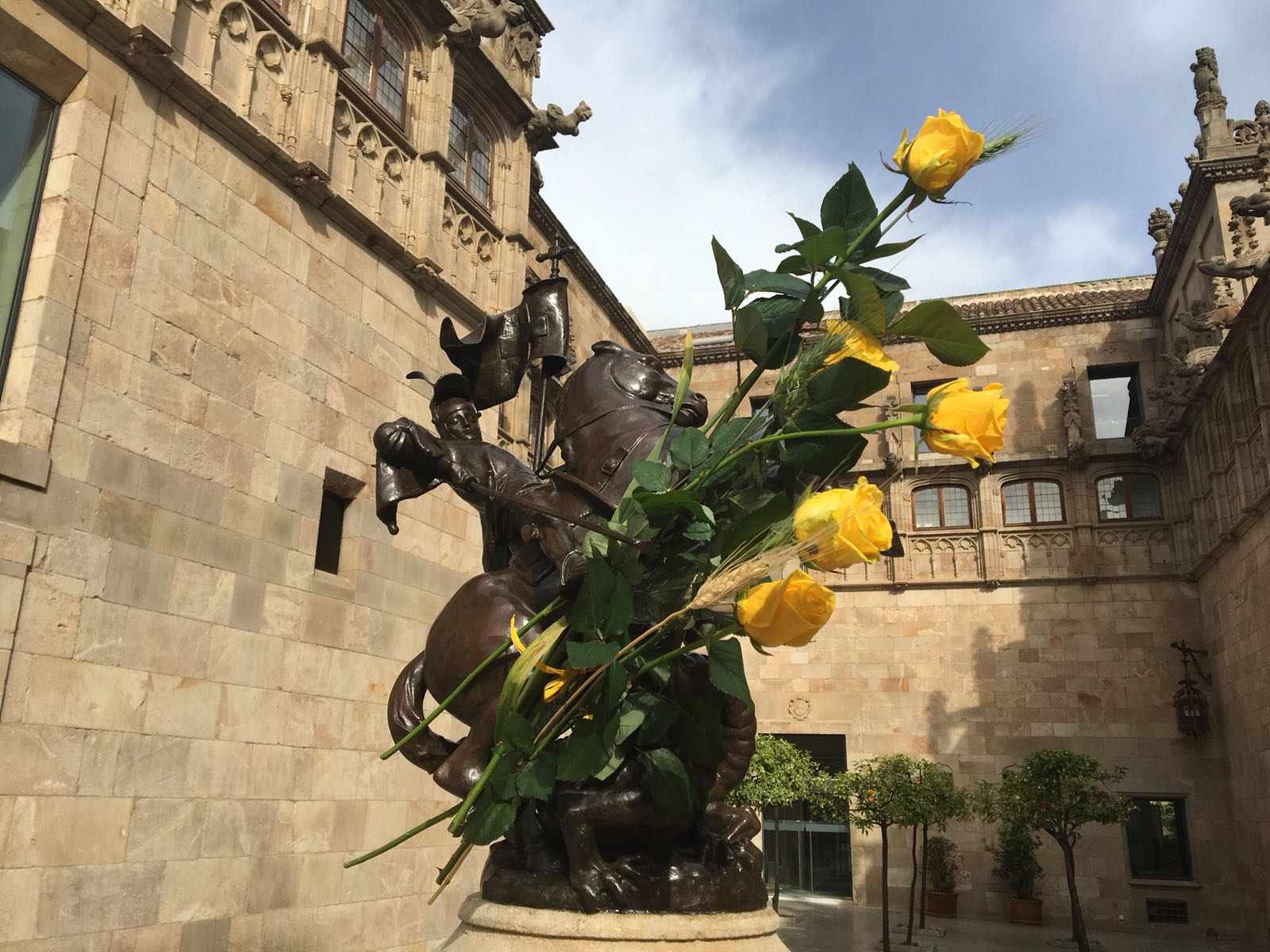A Sant Jordi without the traditional blessing of roses in the Pati de Carruatges courtyard, without a mass in Saint George's chapel (both in the government palace) and, most importantly, without a Catalan government. This is the context in which the government palace in Barcelona has opened its doors this Monday to all those wanting to visit the building, one of the few of medieval origin in Europe which remains the seat of a government and, at the same time, the institution which had it built (the Generalitat, now roughly synonymous with the government).
The day is little conventional following the application, on 27th October last year, of article 155 of the Spanish Constitution which, among other measures, fired the then government.
With the absence of the authorities and institutional officials, the focus has fallen on the visitors entering the Palau de la Generalitat (the Generalitat palace), who have been able to see some of its best-known spaces, including the Galeria Gòtica (Gothic Gallery), Pati dels Tarongers (Orange tree courtyard) and Saló de Sant Jordi (Sant Jordi's room). Many were wearing yellow roses, combing the flower of the day with the colour symbolising support for the Catalan political prisoners and exiles.

